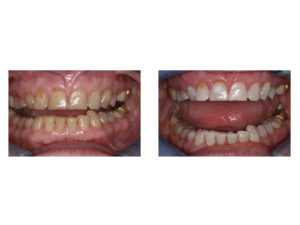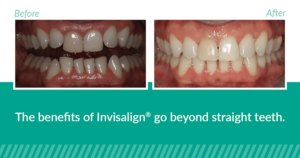What is the best way to whiten my teeth?
Feeling like your smile isn’t as bright as it used to be? Lots of things can cause teeth to yellow or darken over time, and unfortunately, a lot of them are our favorites. Coffee, red wine, chocolate… anything that we put in our mouth that has color to it can add up.
With all the whitening choices out there, how are you supposed to know which one is the best for you? How do you know it will even work? The answer is simple – ask the dentist at Smile Ballard! All whitening products, from the ones you buy over the counter at the drugstore, to the in office professional procedure (like ZOOM whitening), use either carbamide peroxide or hydrogen peroxide as the whitening ingredient. But depending on the concentration, one may take longer than the other. As a general rule, hydrogen peroxide is about twice as strong, but stronger isn’t always better.
Is Whitening Safe?
Yes, it is! Studies have followed people that have whitened nightly for over a year. It does not harm your teeth, but it does have 2 temporary side effects.
- Whitening will make your teeth sensitive to temperature. This sensitivity goes away once you stop whitening, and some people get more sensitive than others. The stronger the whitening agent, the more sensitivity you can expect. So if you are finding it hard to step outside on a cool day without saying “ouch”, you might do better with a less concentrated option, or perhaps whitening every other day rather than daily. Some whitening products now incorporate desensitizing agents to help lessen sensitivity.
- Immediately after whitening, your teeth are dehydrated, and will absorb any kind of moisture they can for about 1-2 hours to rehydrate. This means if you whiten and then immediately go eat a slice of blueberry pie, you may find your teeth looking pinker rather than whiter. The best time to whiten is when you know that you will not be putting anything other than water in your mouth right after.
Does it work for everyone?
Yes, BUT… if you have fillings or crowns in your mouth, whitening agents will not work on these substances. Most people notice upper front teeth, so as a general rule, if you have crowns, veneers or fillings in your upper front teeth, you may not get the results you are after from whitening. If you fall in this category, it doesn’t mean you can’t whiten, but you may need to plan to replace some of the work you had in the past to match your new, whiter smile.
So which one is the best?
In order for the whitening to work, the agent has to stay in contact with your teeth for some period of time. Over the counter strips or trays (like Crest White Strips, or Opalescence Tray White) help accomplish this the best if you are not going with an in office procedure. Whitening pens are quickly washed away by saliva. Whitening toothpastes are more abrasive than regular toothpaste, and while they might better help prevent new stains, they don’t contain any actual whitening agents.
Custom whitening trays made by a dentist are pricier, but will work even quicker than over the counter products and your dentist can help you decide the best brand and concentration of whitening gel to use. Plus, once you have the trays, all you have to do the next time you want to touch up your smile is buy a refill of the gel, which is usually much more reasonable.
In office whitening can get you a quick boost if you are looking for something fast with minimal time investment, but expect the biggest price tag. At Smile Ballard, we use the Phillips Zoom Quick Pro for patients interested in this option.


